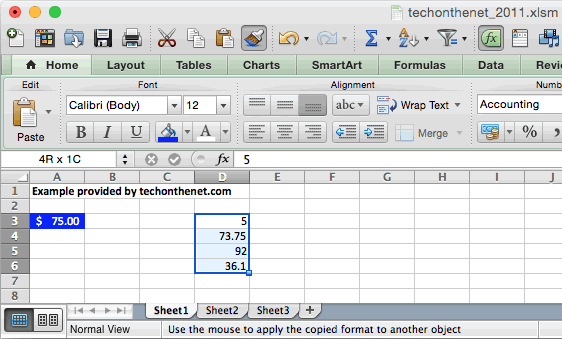

Data file: anonymized customer purchase data.Useful techniques: Various PivotTables to look at it from the view of each client, the consultant and overall, both time and money.Issue: Billing each client, tracking work hours and income.Useful techniques: sort alphabetically, filter into groups, filter to list those earning pins, and use PivotTables to count T shirts.Issues: Organize alphabetically or by group, highlight those earning a milestone year pin, and figure out how many T shirts to order in each size.Data file: Participants in a charity race.Useful techniques: sorting to find largest expenses PivotTables to aggregate by month and category grouping to see how small expenditures add up.Data file: Individual expenditures over 5 months.

As you do each case study, think about your own issues and how you might use the techniques. While the case study is about banking, the approach is applicable anywhere. For example, finding bank clients most likely to go into default is an instance of a general and common data mining challenge: Find the _ most likely to _. Even if you have no knowledge or interest in the specific industries, the techniques you will practice are applicable everywhere. This is key to learning the essential skill of turning data into answers.īelow are the case studies you will be exploring. There may be different approaches to the problem. What you learn may raise further questions. Your challenge is to discover what you can in the data to help shed some light on the issue. Most of all, you’ll be given case studies to explore-a data file and an often-vague issue. You’ll often be asked to “try it” to solidify the techniques you’re learning. You’ll have many opportunities to practice what you’re learning.

Keep it in mind as you work through the tools.Įxcel is not a spectator sport. You will get the most out of the class if you have or can get data and if you have questions to answer or decisions to make. The answers may be in there somewhere, but how do you draw them out? That’s the focus of this class.

Sometimes you have too much data, overwhelming columns of numbers and categories with no clear order or meaning.
#Using excel on mac how to
Your data may be in inconsistent pieces or have extraneous information, and you’ll learn how to fix that. First you will structure the data to make finding answers quick and flexible. You will learn to turn your mess of data into answers, decisions, and action. You will learn PivotTables, sorting, filtering, VLOOKUP, formulas and more. Do the hands-on case study challenges and experience the power of these simple analytical techniques. You will be given sample spreadsheets for real-world personal and business case studies. You will be surprised at the powerful analysis that can be done with simple spreadsheets, including data science techniques like data mining, segmentation, and clustering. Getting Answers from Data using Excel brings you the best techniques for slicing and dicing your mess of data until the insights fall right out of it.
#Using excel on mac mac
I’m using a Mac with specific instructions for Windows in the few places the interface differs.
#Using excel on mac for mac
Getting Answers from Data using Excel for Mac or Windows


 0 kommentar(er)
0 kommentar(er)
